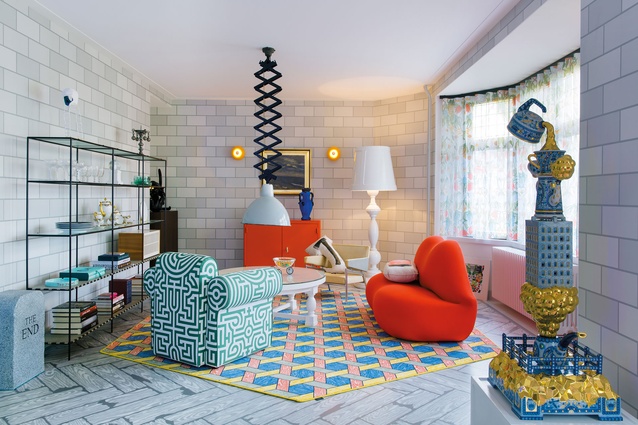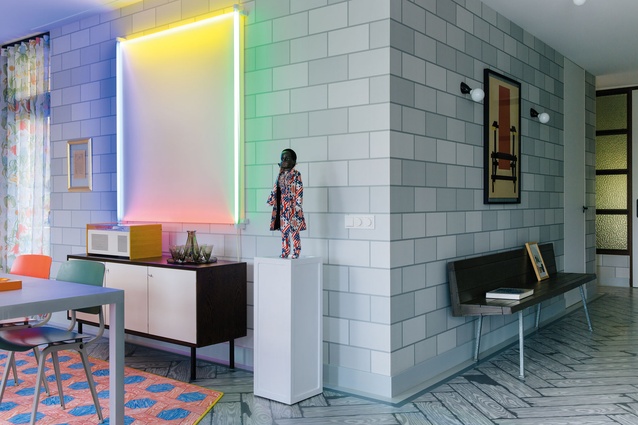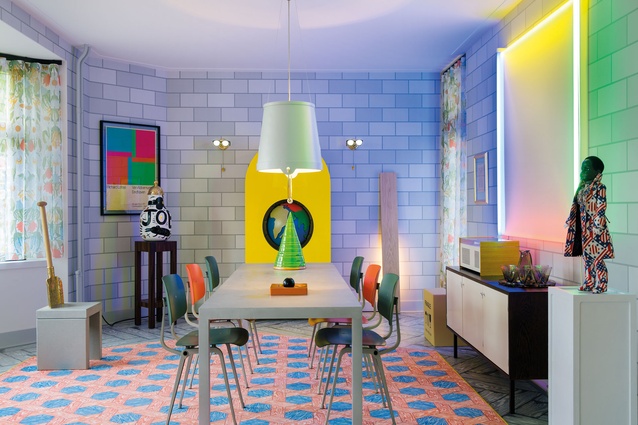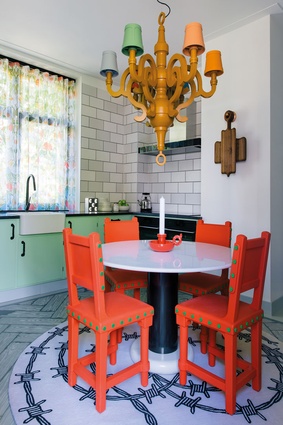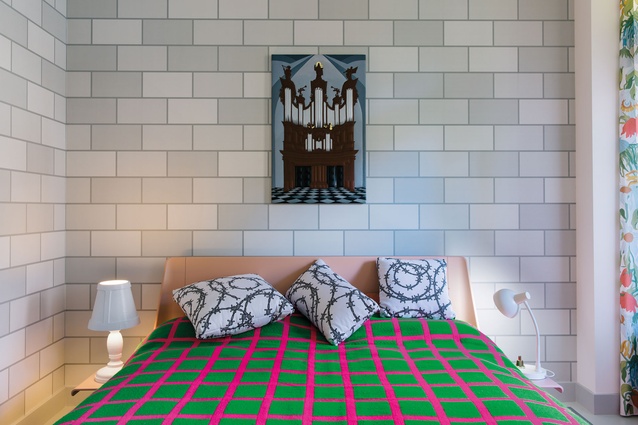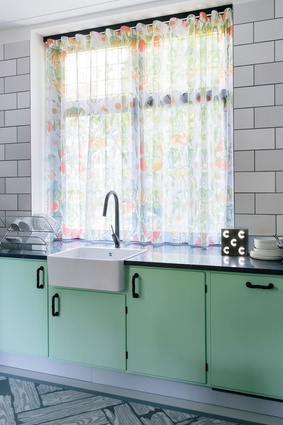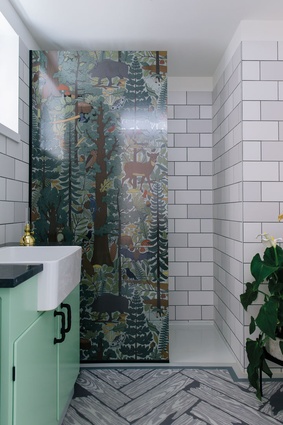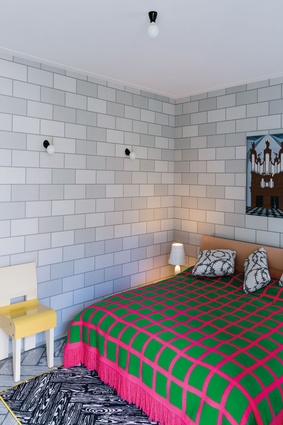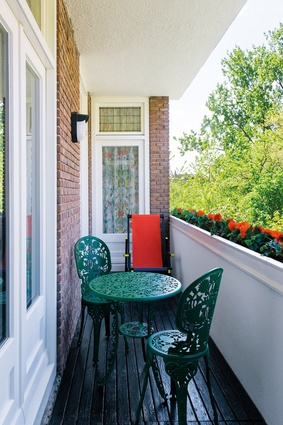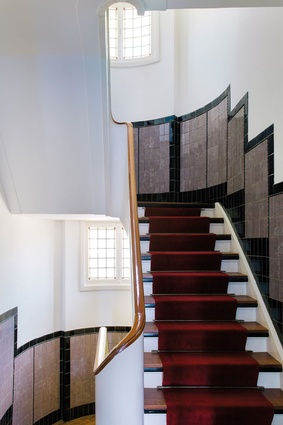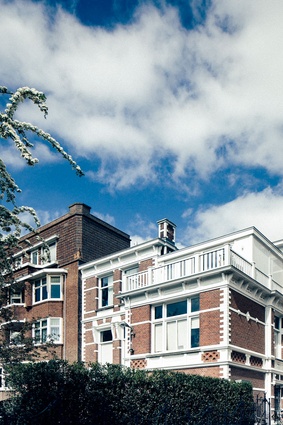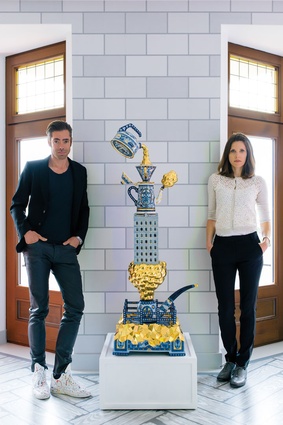With a bang
Daring and intensely playful, this Amsterdam apartment toes the line between museum and conceptual home.
There are some notable house museums scattered around the world – think Sir John Soane’s Museum in London, Venice’s Peggy Guggenheim Collection or, a more contemporary interpretation, Melbourne’s Lyon Housemuseum. What’s interesting about the house museum is the way in which it challenges our notions of curation and exhibition, at the same time blurring the line between the objects on display and what surrounds them.
While this project adopts quite a different approach from those of its storied predecessors, it’s a fascinating take on living with and within art and design. For Job Smeets, one half of Dutch-Belgian design team Studio Job, the project was about finding a home for an existing collection of 20th-century artefacts: “We are collectors and we had a big collection of art, design pieces and memorabilia. We always try to find the best way to conserve them.”
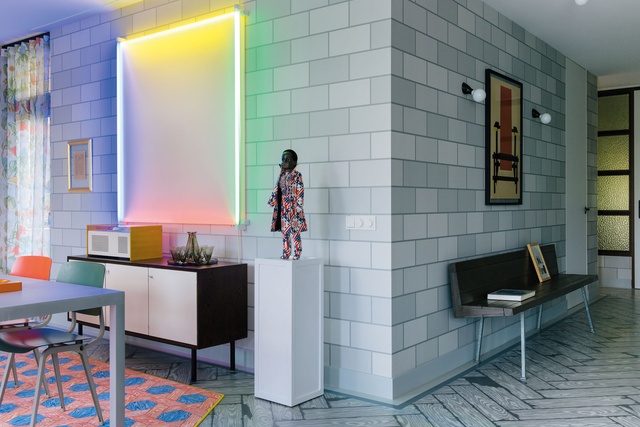
Splitting their time between Amsterdam and Antwerp, Smeets and his creative partner, Nynke Tynagel, tired of finding accommodation on their visits to the Dutch capital. “We found this historic apartment in Amsterdam: an old-school style built in 1922 by a famous Dutch architect,” explains Smeets. “We bought it to house the collection and create a sort of ‘suite’ interior concept, which was basically a luxurious, tasteful apartment in the most prime situation in Amsterdam.”
Readers familiar with the studio’s work (on the cover of Urbis 94) will know that this deceptively pedestrian brief was unlikely to produce a conventional result. Effortlessly melding high and low culture, art, architecture and design, Studio Job has built a reputation on its playful, irreverent, intelligent and inventive approach to design. In partnership with leading design brands, the studio has been producing instantly recognisable furniture, lighting and objects since its establishment in 2000.
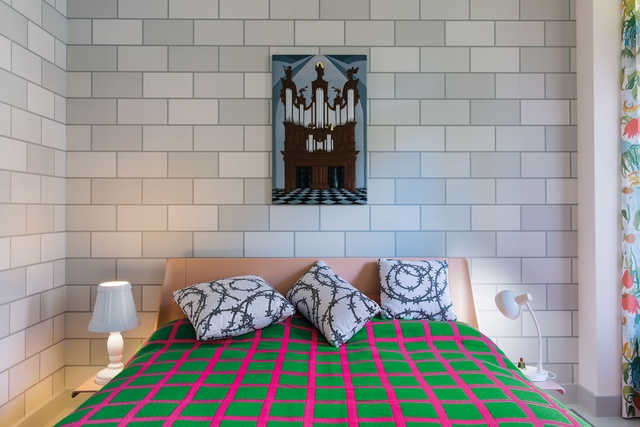
The first step in the project was to reinstitute the apartment’s original 1920s’ layout. “The apartment interior was completely rebuilt in the 1970s but we brought it back to its original floor plan and approached the interior design with that at the centre of our minds,” Smeets says. While the new interior is undoubtedly contemporary, it draws upon the building’s original Amsterdam School architecture.
Central to the studio’s approach is the concept of Gesamtkunstwerk – a German aesthetic tradition focused on a ‘synthesis of the arts’ or a ‘universal artwork’. “Everything belongs to each other, from the floors, to the walls, to the ceiling, to the art,” Smeets says. “Also, because we didn’t really buy anything new for this apartment – we just gave our pieces a new space within this apartment – it becomes a Gesamtkunstwerk by nature.”
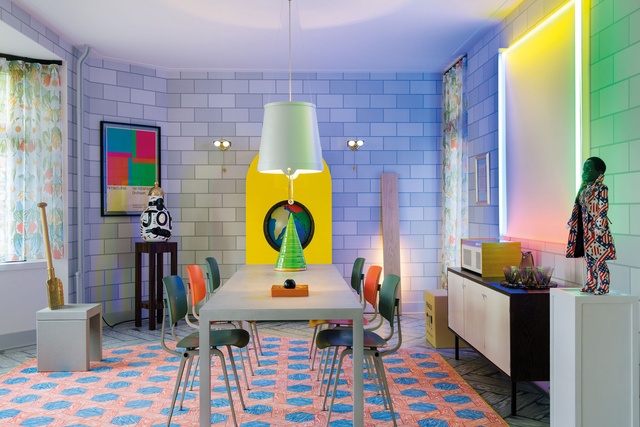
The project is, at once, home, gallery and showroom – it exhibits iconic design pieces from the last century, from designers like Pierre Cardin, Dom Hans van der Laan, Ettore Sottsass, Ingo Maurer and Aldo van den Nieuwelaar, alongside achingly cool, contemporary objects.
The main living and dining space, splashed with sunlight from two bay windows, is a fine example. Classic pieces like the curvaceous 1970s Bocca sofa for Gufram – inspired by a 1935 portrait of Mae West – and a vintage scissor pendant sit comfortably alongside a Labyrinth armchair, Paper floor lamp and Hexagon rug from Studio Job’s collaboration with Moooi. Between the two bay windows, a dazzling porcelain totem, produced by Royal Tichelaar Makkum, was inspired by 17th-century Flemish flower pyramids.
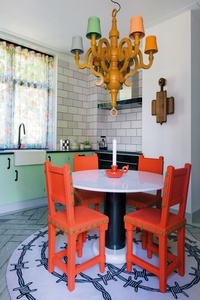
“We try to play with the history and topics of the time. For instance, the modernists in the 1950s were just as innovative as the post-modernists in the 1980s,” Smeets says. “By putting them together, although it seems you are creating an aesthetic contrast, you create an equilibrium. An aesthetic contrast becomes a perfect contextual balance.”
The kitchen continues this same effortless traversing of eras and aesthetics, re-imagining a typical Dutch kitchen from the 1920s. A partially inset sink projects beyond the pale-green joinery, next to a Lotorosso table, which is used for informal dining. Here, too, we find some stunning examples from the Studio Job catalogue; the curving Paper chandelier and Gothic chairs were designed for Moooi while the barbed-wire-patterned rug resulted from a partnership with Nodus.
The room’s walls are wrapped in the same almost-cartoonishly flat, NLXL grey brick wallpaper as is the rest of the apartment, while the floors continue the playful timber parquetry resin flooring that the studio designed for Senso.
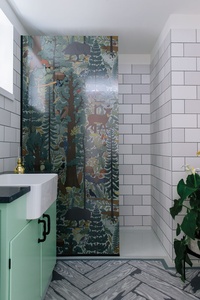
One of the trademarks of the studio’s output is the intricate patterning of many of its pieces. Here, it’s evident in the diaphanous curtains that soften the windows in the living and dining room – Withered Flowers, designed by Studio Job for Exposize. Or, in the bathroom’s patterned shower screen, instead of a plain glass panel, a fantastical forest scene unfolds in the small space: a small moment of delight.
On the narrow balcony, a wrought-iron table and chairs look out to the neighbourhood but, instead of the usual patterning, a field of cogs, gas masks, butterflies and other iconography swirls across their surface.
“It’s a very expressive and dynamic space, and it gives me a meditative and calm feeling when I arrive in the apartment,” Smeets says. “In the end, modernist or post-modernist, expressionist or minimalist, the goal is the same: to try to create authenticity within the field you are working in or, more importantly, authenticity within your own work or your own personality.”

